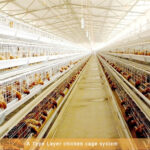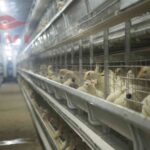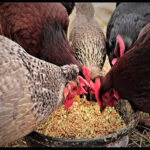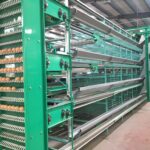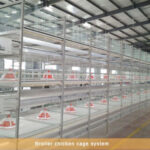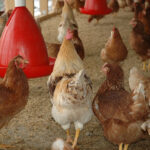Some nutritional problems in laying hens
Most of the laying hens and households are mainly self-contained feeds. Although the nutrition of the feed is very important, some conditions and misunderstandings make the hens feed formula and configuration process unreasonable.
Regarding the importance of protein, everyone knows that when formulating feed, there are several data requirements for protein content. The crude protein content of the feed chicken (9-20 weeks old) should not exceed 14.5%. The lower crude protein content of the feed at this stage avoids the chickens being over-fertilized, which is conducive to the high egg production rate of the laying hens for a long time. The content of crude protein in the feed at the beginning of production (about 21 weeks old) must be determined by the daily feed intake of the laying hen at that time. At this stage, each laying hen must consume 19.6 grams of crude protein per day. Therefore, when each layer of chicken is fed 100 grams per day, the crude protein content of the feed should be 19.6%; when the feed intake is increased to 120 grams, the crude protein content of the feed should be reduced to 16.5%. The egg production rate of the laying hens is quickly pushed to the peak. The above is only a theoretical calculation, because in practice, as long as the flock is normal, the general feed intake is relatively average, so the protein content is generally recommended.

The daily requirement for crude protein in commercial laying hens after 42 weeks of age will drop to 17.8 grams. With the natural rate of egg production and the increase in daily feed intake, the crude protein content of commercial laying hens will drop to about 15%. Some farmers mistakenly believe that the drop in egg production rate is due to insufficient crude protein content in the feed, which increases the crude protein content of the feed. The results not only affect the health of the flock, but also increase the cost of raising chickens in poultry farm equipment manufacturer.
Regarding whether additional additives are added to the chicken feed, it is best to add some choline to the feed after the laying hen is started. However, care must be taken not to add water-soluble vitamins and bone meal or calcium hydrogen phosphate. Because choline is easily soluble in water and alkaline, it acts on water-soluble vitamin C and vitamin B, and calcium and phosphorus are easily absorbed only in acid. In the production of laying hens, self-contained feeds account for a considerable proportion, and many use premixes or concentrates. The main nutrients are already included here, and we are paying attention to the variety of feed ingredients in chicken cages prices in South Africa.
